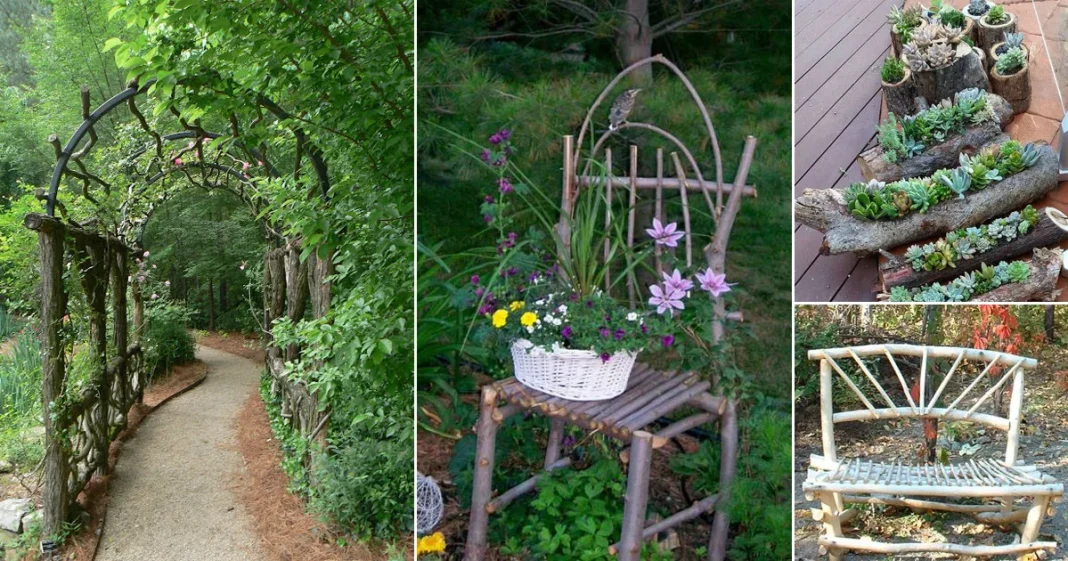Gardening is not just about planting and nurturing plants; it’s also about creativity and sustainability. One way to enhance both is by reusing old branches in your garden. Whether you’ve pruned your trees or cleaned up after a storm, those branches can be turned into valuable assets for your garden. This article will explore various innovative and practical ways to use old branches, transforming them into functional and aesthetic additions to your outdoor space.
1. Create Natural Edging and Borders
- How to Use: Trim branches to similar lengths and use them to edge your garden beds. They can define spaces effectively and add a rustic charm.
- Benefits: Besides providing a clear boundary for garden areas, wooden edging integrates seamlessly with the natural landscape, enhancing the garden’s overall aesthetic.
2. Build a Trellis for Climbing Plants
- How to Use: Assemble branches into a grid or ladder formation and secure them at joints with twine or nails. Erect the structure in your garden for climbing plants like vines, peas, and beans.
- Benefits: A branch trellis is not only functional but also an eco-friendly way to support your plants. It helps maximize vertical space in the garden.
3. Craft Rustic Plant Supports
- How to Use: Use sturdier branches as stakes for supporting growing plants or for propping up drooping flowers.
- Benefits: These natural stakes blend into the garden more harmoniously than metal or plastic alternatives and can be customized to various heights.
4. Construct a Compost Bin
- How to Use: Weave branches together to form the sides of a compost bin, using larger branches for the frame and smaller ones to fill the gaps.
- Benefits: This provides an airy structure that aids the composting process by enhancing airflow, which is crucial for decomposing organic material.
5. Make a Garden Walkway
- How to Use: Lay down branches side by side to create a rustic walkway through your garden. For stability, embed them slightly into the ground or use a sand base.
- Benefits: A branch walkway is not only aesthetically pleasing but also practical, minimizing soil compaction in heavily trafficked areas of your garden.
6. Design Garden Art
- How to Use: Get creative by assembling branches into decorative shapes or sculptures to enhance your garden’s visual appeal.
- Benefits: This adds a personal touch to your garden, making it unique. It’s also a great way to engage children in gardening activities.
7. Create a Wildlife Shelter
- How to Use: Pile up branches in a quiet corner of your garden to create a habitat for wildlife like insects, birds, and small mammals.
- Benefits: This not only helps local wildlife but promotes biodiversity within your garden, which can aid in pest control and pollination.
8. Mulch Your Garden
- How to Use: Chip smaller branches to create wood chips that can be used as mulch.
- Benefits: Wood chips help retain soil moisture, suppress weeds, and add organic matter to the soil as they decompose.
Conclusion: Sustainability Meets Creativity
Using old branches in your garden is a fantastic way to reduce waste while enhancing the functionality and beauty of your outdoor space. Each of these uses not only serves a practical purpose but also contributes to a more sustainable and eco-friendly gardening practice. Embrace these ideas and watch your garden transform with just a few branches.










